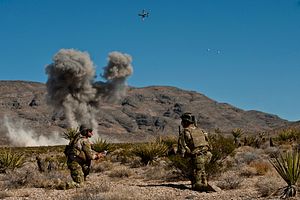The UN Assistance Mission in Afghanistan claimed at least 2,562 civilians died and another 5,835 were wounded during the first 9 months of the year in a report issued October 19. The UN argues that antigovernment forces bear the responsibility for the brunt of civilian casualties; however, civilian casualties caused by pro-government forces rose 42 percent, which includes 72 percent in casualties from air strikes by the Afghan Air Force.
The rise in civilian deaths can be partially attributed to the increase in fighting in densely populated areas as Taliban gains during the 2016 fighting season have seen major sieges of provincial capitals from Kunduz to Lashkar Gah.
This year, Afghan forces fielded a new array of air platforms and weapon systems to combat a resurgent Taliban threat. Those included new Mi-25 helicopter gunships from India, and the A-29 Super Tucano, a propeller-based fixed-wing ground attack aircraft, delivered by the U.S.
The inclusion of these platforms into the Afghan arsenal has provided new capabilities and capacities to a struggling force; however, the rush to the battlefield without properly trained forces and or mechanisms to limit unnecessary loss of life and property has come at a cost.
Not only has Afghanistan witnessed a rise in civilian casualties but also Afghan aircraft have accidentally targeted their own forces on the ground. In September, NATO forces were mistakenly blamed for a strike in Helmand province that killed 11 Afghan police, and once again NATO was blamed for a strike carried out by Afghan forces in Farah that killed 5 Afghan commandos.
“Unfortunately our helicopter killed five commando soldiers and a policeman,” said Gen. Dawlat Waziri, spokesman for the Afghan ministry of defense. “The troops on the ground gave our air force the wrong coordinates.”
To address the rising civilian casualties and “green on green” attacks (attacks by Afghan forces on other Afghan forces), NATO has decided to implement an Afghan Tactical Air Controller training program.
“When you’re in the air, the picture of what’s going on is vastly different than when you’re on the ground,” U.S. advisers Lieutenant Colonel Andy Janssen told Reuters.
“The ability to talk a pilot’s eyes to the target effectively is huge. The effectiveness of the strikes goes up exponentially when you do that.”
Currently, there are roughly 60 students in the training program with a goal of fielding 100 by March. The training consists of utilizing GPS devices, laser range finders, and tactical radio sets to direct aircraft effectively onto ground targets. The current training program is 6 weeks compared to the years of training that NATO and U.S. joint terminal attack controllers and forward air controllers go through to receive certifications to accurately call in airstrikes.
Afghan forces still lack a lot of the necessary components to fight the brutal insurgency that has witnessed major gains by Taliban forces. As General Nicholson indicated “standing up the Afghan army is like trying to build an airplane while in flight.” NATO and Afghan forces continue to adapt to capability and capacity gaps as lessons learned each fighting season become visibly apparent.

































